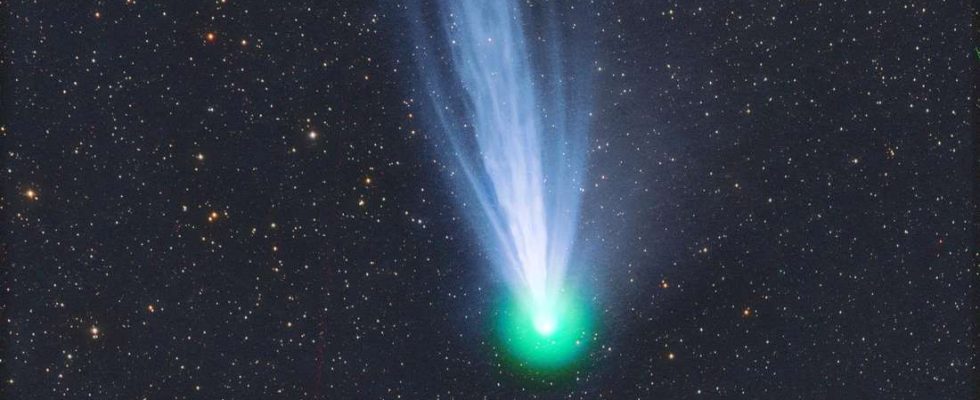Press
A rare celestial spectacle can be seen over Lower Saxony: Comet Pons-Brooks, only visible every 71 years, can be seen in the night sky.
Lower Saxony – A very special celestial spectacle is currently taking place in the night sky in Lower Saxony: Comet Pons-Brooks, which can only be seen every 71 years, is currently lighting up the region’s night sky. As it approaches the inner solar system on its journey, it increases in brightness day by day. It still takes a look through a camera with a telephoto lens to spot it, but chances are good that it will be visible to the naked eye by the end of the month.
The phenomenon that the celestial body offers us is not just a rare opportunity for stargazers. It is an event that fits into the long history of astronomy. Discovered in 1812 by Jean-Louis Pons and later reidentified by William Robert Brooks in 1883, records of the comet even appear in 14th and 15th century writings. Known for its unexpected bursts of brightness, which were also evident this year, Pons-Brooks offers an impressive spectacle at the star tent.
Observing tips: How to best see the rare comet
The sight of the comet, standing almost two hand-breadths high in the west around eight o’clock in the evening, is a challenge for the naked eye with its blurry greenish glow. Unlike the clear, defined points of light that represent planets and stars, the comet often appears brighter in photographs than in direct observation.
[Täglich um 18 Uhr per Mail: Unser Newsletter aus der Region, für die Region – hier kostenlos anmelden!]
[Immer auf dem Laufenden mit der kreiszeitung.de-App: Jetzt herunterladen und für personalisierte News anmelden – kostenlos]
A particular highlight in observing the comet is a photo taken over the North Sea island of Norderney. Thanks to the optimal weather conditions, the Norderney Observatory was able to capture a spectacular image that shows the comet, also called the “Devil’s Comet” because of its two bright tips that look like horns, in all its glory.
Comet Pons-Brooks brightest in the sky on April 21st
As Pons-Brooks approaches its closest point to the sun on April 21, reaching its brightest moment, its passage reminds us of how infinite and mysterious the universe is. The comet, which will then be around 117 million kilometers from the sun, still offers plenty of opportunity to experience a piece of cosmic history. Then, however, much closer to the Sun than the Earth, it will no longer be visible from our vantage point. Until then, the clear nights of Lower Saxony invite you to witness this extraordinary event.

